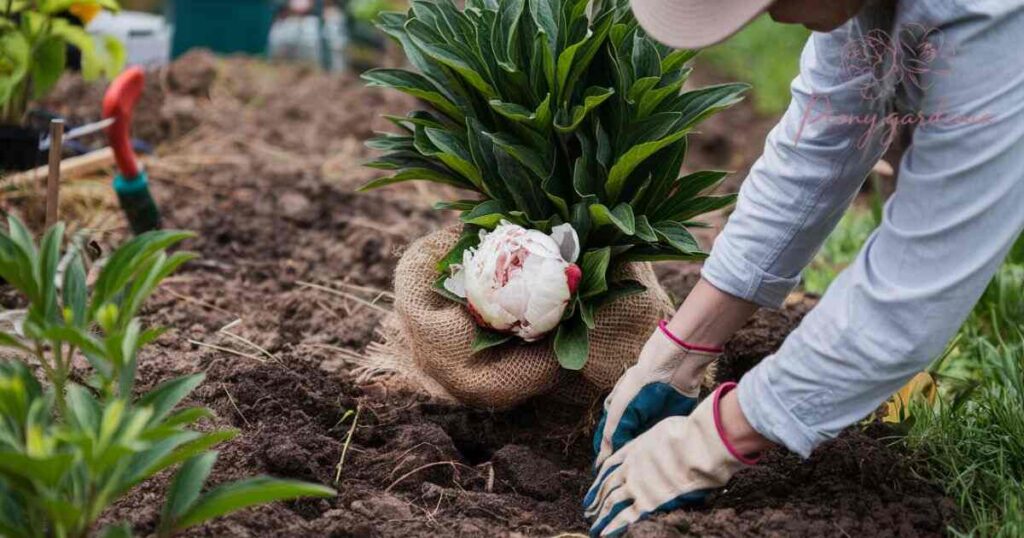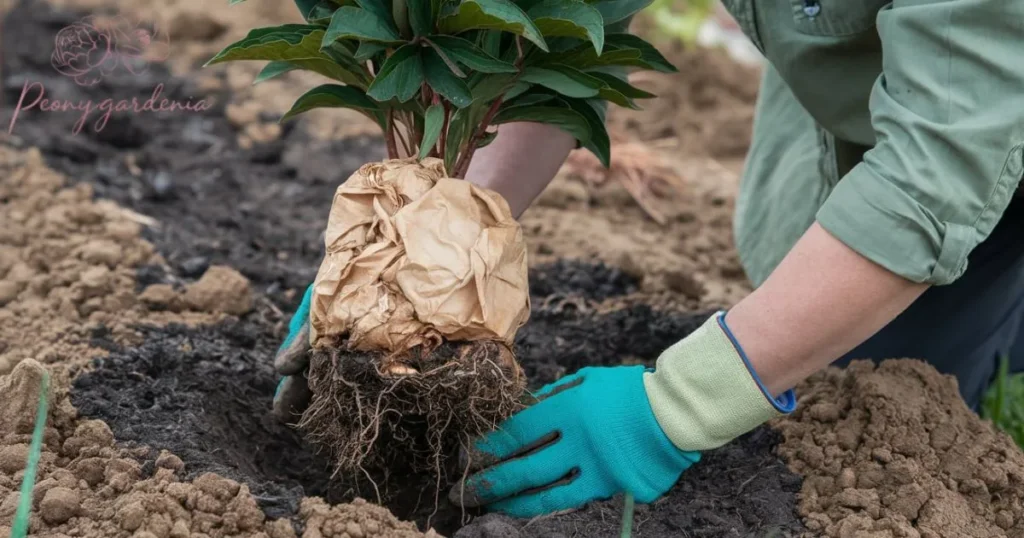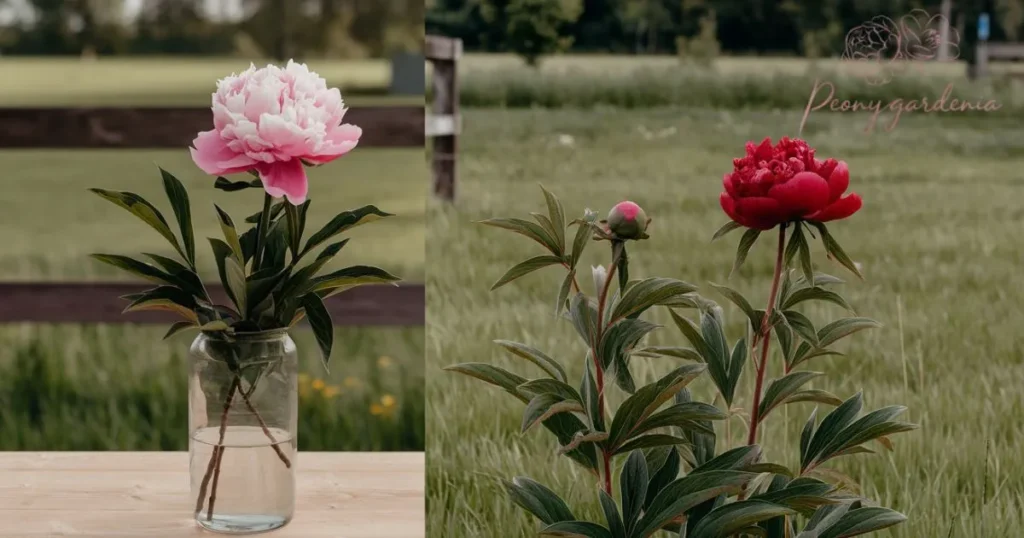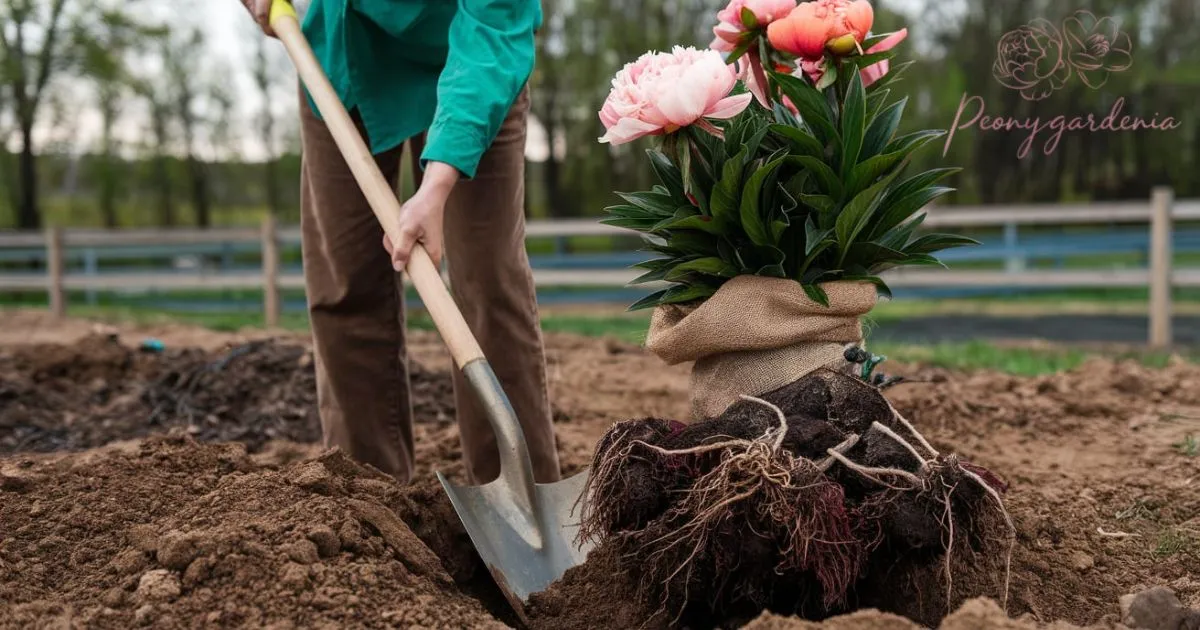Planting peony roots is a rewarding process that, when done correctly, leads to stunning blooms year after year. Known for their large, fragrant flowers and vibrant colors, peonies are a favorite among gardeners. However, to ensure these perennial plants thrive, it’s essential to understand the proper planting techniques. From selecting the right location to knowing the ideal planting depth, every step plays a role in the plant’s overall success.
The first step in planting peony roots is choosing the right time and location. Peonies prefer full sun and well-drained soil, making a sunny garden bed the perfect spot. Planting in early fall or early spring gives the roots time to establish before the growing season begins. Once you’ve selected the ideal location, digging a hole with the proper depth and spacing is crucial to ensure healthy root development.
When to Plant Peony Roots

The best time to plant peony roots is during the fall, from late September to early November. This allows the roots to establish themselves before winter dormancy, ensuring vigorous growth in spring. Planting during cooler months gives peonies the advantage of developing strong roots without the stress of summer heat.
Avoid planting peonies in the spring or summer as they struggle to establish in warm soil. If you must plant in spring, ensure the roots remain well-watered and shaded. However, fall planting remains the optimal time for thriving plants.
Read More: Fertilizer for Peonies
Informative table
| When to Plant Peony Roots | Ideal Planting Seasons | Best planted in fall or early spring. |
| Where to Plant Peony Roots | Choosing the Perfect Location | Needs full sun, well-drained soil, and protection from strong winds. |
| How to Plant Peony Roots | Step-by-Step Planting Guide | Dig a hole, place the root with buds 1–2 inches below soil, and cover. |
| Caring for Your Peonies | Watering and Fertilizing | Water regularly, especially during dry spells, and use balanced fertilizer. |
| Seasonal Care Checklist | Spring: Emerging Growth and Maintenance | Remove mulch, inspect for pests, and ensure proper drainage. |
| Summer: Blooming Care | Water deeply and remove spent blooms to encourage more flowers. | |
| Autumn: Preparing for Dormancy | Cut back foliage after the first frost, and apply mulch for protection. | |
| Winter: Protecting Your Plants | Cover with mulch or straw to prevent frost damage. | |
| Growing Peonies in Different Conditions | Growing Peonies in Pots | Ensure pots have drainage, use good potting mix, and place in a sunny spot. |
| Common Challenges and Solutions | Pests and Diseases | Peonies are prone to specific pests and diseases like Peony Wilt and Leaf Blotch. |
Where to Plant Peony Roots
Peonies thrive in locations that receive full sunlight, ideally six to eight hours daily. Choose a spot with well-drained soil to prevent waterlogging, as soggy conditions can cause root rot. Raised beds or slightly sloped areas are excellent choices for drainage.
Avoid planting peonies near large trees or shrubs, as they compete for nutrients and water. A sheltered spot away from strong winds is also beneficial to protect their blooms from damage.
How to Plant Peony Roots

Start by preparing the soil by loosening it to a depth of 12-18 inches and mixing in compost or well-rotted manure for added fertility. Dig a hole deep enough to accommodate the peony root, with its “eyes” or buds facing upwards and about 1-2 inches below the soil surface.
Cover the root with soil and gently firm it down, ensuring no air pockets remain. Water thoroughly after planting, and apply a light layer of mulch to retain moisture. Avoid burying the root too deeply, as this can hinder blooming.
Caring for Your Peonies
Proper care ensures that your peonies bloom year after year. Water them deeply once a week, especially during dry periods, to encourage deep root growth. Overwatering should be avoided as it can lead to fungal diseases.
Fertilize peonies in early spring with a balanced, slow-release fertilizer to promote healthy growth. Avoid high-nitrogen fertilizers, as they encourage foliage at the expense of blooms. Regular care will keep your peonies vibrant and thriving.
Seasonal Care Checklist

A seasonal care checklist ensures your home and garden are prepared for changing weather. Tasks include cleaning gutters, inspecting heating systems, checking insulation, and maintaining outdoor furniture. For gardens, focus on planting season-appropriate flowers, trimming trees, and preparing lawns for winter or summer, depending on the season.
Spring
Spring signifies the beginning of a vibrant season for peonies as their shoots emerge, hinting at the beauty to come. During this time, gardeners should provide adequate support with stakes to protect new growth from harsh winds or heavy rain. Applying a layer of mulch not only retains soil moisture but also suppresses weeds.
Regular inspection for pests like aphids is crucial to ensure healthy development. Spring care lays the foundation for a season of breathtaking blooms, making it the most exciting time for peony enthusiasts. With the right attention, your peonies will thrive and brighten your garden.
Summer
Summer is when peonies showcase their vibrant blooms, adding charm to gardens with their stunning colors and fragrances. To ensure they remain healthy, deadhead spent flowers to direct energy toward root development and future blooms. Consistent watering during dry spells is crucial, keeping the soil moist without causing waterlogging.
Monitor plants regularly for fungal diseases like powdery mildew, addressing issues promptly with proper airflow and treatment. A light layer of mulch helps retain moisture and maintain soil temperature. With attentive care during summer, peonies will thrive, offering beauty and setting the stage for robust growth in the following seasons.
Autumn
Autumn, also known as fall, is a season of transformation and beauty. As the weather cools, trees shed their leaves, creating a vibrant tapestry of red, orange, and yellow across landscapes. The crisp air carries the scent of pine and earth, signaling the approach of winter.
Autumn is a time of harvest, with farmers gathering the last of their crops, and festivals celebrating the abundance of nature. The shorter days and longer nights encourage coziness, with warm drinks, knitted scarves, and the anticipation of the holiday season. It’s a season of change, reflection, and warmth despite the chill.
Winter
Winter is a season marked by cold temperatures, shorter days, and longer nights. It brings a serene stillness to the world, as snow blankets the earth, turning landscapes into winter wonderlands.
Trees stand bare, their branches etched against the grey sky, while the crisp air cuts through, invigorating the senses. People bundle up in layers of clothing, seeking warmth from cozy indoor spaces or the glow of a fireplace. The season also brings a sense of peacefulness, with nature slowing down and offering a chance for reflection and rest before the arrival of spring’s renewal.
Growing Peonies in Different Conditions

Peonies thrive in well-drained soil and full sunlight, but they can adapt to various conditions. In colder climates, they require winter protection, while in warmer areas, they need some afternoon shade. Regular watering and proper spacing ensure healthy growth, allowing peonies to bloom beautifully in diverse environments.
Growing Peonies in Pots
Growing peonies in pots is a great way to enjoy these beautiful flowers in small spaces or on patios. To successfully grow peonies in containers, choose a pot that is at least 18 inches wide and deep to accommodate their root systems.
Use well-draining soil, and make sure the pot has drainage holes to prevent waterlogging. Plant peonies with their eyes (buds) facing up, about 2 inches below the soil surface. Place the pot in a sunny spot, as peonies require full sunlight to thrive. Water regularly, but avoid overwatering, and ensure the plant has proper winter care for healthy blooms.
Transplanting and Dividing Peonies
Transplanting and dividing peonies is an essential task for maintaining their health and promoting better blooms. The best time to transplant or divide peonies is in early fall, after the plant has finished flowering and the foliage begins to die back.
Start by carefully digging up the peony clump, ensuring you preserve the roots. Gently separate the clumps, making sure each division has at least three to five healthy eyes (buds). Replant the divisions in well-drained soil, ensuring they are planted at the same depth as before. Water thoroughly and provide a layer of mulch to protect the roots over winter.
Advanced Tips for Peony Enthusiasts
For peony enthusiasts looking to elevate their garden, focus on advanced care techniques such as proper pruning, ensuring well-drained soil, and selecting the right planting depth. Experiment with companion planting to enhance peony growth, and consider applying organic fertilizers to promote healthy blooms and robust root systems.
- Types of Peonies: Herbaceous peonies are the most common, dying back in winter and regrowing in spring. Tree peonies, however, maintain woody stems year-round. Intersectional or Itoh peonies combine the best traits of both.
- Companion Plants for Peonies: Pair peonies with plants like irises, foxgloves, or delphiniums. These companions provide a beautiful backdrop while complementing peonies’ growth habits and bloom cycles.
Peonies and Their Meaning

Peonies are not only admired for their vibrant colors and delicate petals but also for their deep symbolism. These beautiful flowers are often associated with love, prosperity, and good fortune. In various cultures, peonies represent romance and affection, making them a popular choice in weddings and celebrations.
The lush blooms also symbolize honor, respect, and compassion, often linked to a sense of deep admiration. In Chinese culture, peonies are revered as the “king of flowers” and are believed to bring wealth and success. With such rich meanings, peonies are a timeless symbol of beauty and positive energy.
Conclusion
In conclusion, planting peony roots is a straightforward process that requires careful attention to detail for successful growth. Start by selecting a well-drained, sunny location to ensure the roots receive the proper amount of light and moisture. Dig a hole that is about 12 inches deep and wide, providing ample space for the roots to spread.
Position the root so that the eyes (buds) are just 1 to 2 inches below the soil surface to encourage strong growth. Add organic matter or compost to improve soil fertility, then water thoroughly. Finally, be patient, as peonies may take a couple of years to fully bloom, but with proper care, these beautiful flowers will reward you with vibrant, fragrant blooms for years to come.
FAQs
When is the best time to plant peony roots?
Plant peony roots in early fall or early spring for optimal growth.
How deep should I plant peony roots?
Plant peony roots with the eyes (buds) 1 to 2 inches below the soil surface.
Do peonies need full sun to grow?
Yes, peonies thrive in full sun for at least 6 hours a day.
How far apart should I plant peonies?
Space peony roots about 3 feet apart to allow for proper growth.
Should I add fertilizer when planting peonies?
It’s beneficial to mix compost or organic matter into the soil but avoid chemical fertilizers.









